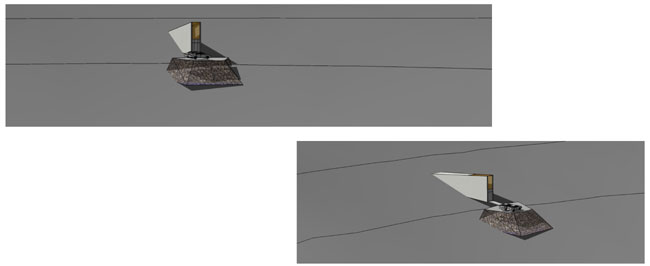Norway Reveals Doomsday Vault's Design

Designs for a doomsday vault for seeds of the world, to be carved deep into frozen rock on an island not far from the North Pole, were revealed today by the government of Norway.
The Svalbard International Seed Vault, first annnounced last year, will act like a Noah's Ark for nearly every food crop of every country, to safeguard the agricultural heritage of humankind in the face of increasing global environmental changes.
"The Norwegian government hopes to contribute to combating the loss of biological diversity, to reduce our vulnerability to climatic changes, and to enhance our ability to secure future food production," said Norway's minister of agriculture and food Terje Riis-Johansen.
Vast diversity
A vast diversity in crops exists across the planet.
"There are, for instance, well over 100,000 distinct varieties of rice, compared to the 400 or so breeds of dog out there," Cary Fowler, executive director of the Global Crop Diversity Trust, told LiveScience. "These represent all the options that crops have for developing in the future, the raw material for plant evolution."
These distinct varieties may possess extraordinary and possibly unique traits in terms of taste, nutritional quality, pest and disease resistance, or adaptability to various environments. For example, some rice species can grow as much as 20 feet underwater, Fowler explained, or in semi-arid conditions.
Sign up for the Live Science daily newsletter now
Get the world’s most fascinating discoveries delivered straight to your inbox.
At the same time, "every day that passes, we lose crop biodiversity," Fowler said. For instance, of the 7,100 named varieties of apples grown in the United States in the 1800s, more than 6,800 no longer exist.
"Given the option of modern varieties of agricultural crops, which are often more productive, farmers often make a rational economic decision to grow those varieties, and older traditional varieties can literally just be eaten up in a bowl of porridge and go extinct," Fowler said.
The Global Crop Diversity Trust is helping to fund the vault's operations and pay for the preparation and transport of seeds to the Arctic isle of Svalbard. The island was chosen for the vault in part because its ground is perpetually frozen permafrost. This means it can provide natural backup refrigeration to help preserve seeds, should electricity fail.
Still, project architects also considered how to offset any potential impacts that worst-case scenarios of global warming might have on the island. For instance, the vault is located roughly 425 feet above sea level. This puts it well above a roughly 20-foot rise in sea level that would accompany the melting of Greenland's ice sheet, or even a 200-foot rise that would come with an unlikely total meltdown of Antarctica.
Cold storage
Researchers also saw the deeper the vault was, the colder it would remain. To help keep the seeds safely refrigerated, the vault will be located nearly 400 feet into the side of a mountain, ensuring that rising outside air temperatures will not influence the surrounding permafrost. At the end of this tunnel, the project will build two chambers capable of holding a total of three million seed samples, making it the largest such seed bank in the world [Views of the entrance].
"Even climate change over the next 200 years will not significantly affect the permafrost temperature," said project manager Magnus Bredeli Tveiten, with the Norwegian government's directorate of public construction and property.
While scientists are not sure what the precise impacts of potential climate changes might be, "we certainly know it's going to have a major impact on certain growing areas and affect the diversity in the field," Fowler said. "So climate change will both pose a threat to the diversity we have, and make that diversity much more valuable."
The project's cornerstone was laid in June 2006. Construction is set to start in March 2007 and to finish in September 2007, with an official opening planned in late winter 2008.
More to Explore
- Video: The Arctic Meltdown
- Video: Goldilocks and the Greenhouse
- Surprising Results of Global Warming
- Emerging Environmental Technologies
- The History of Climate Change Science
- How You Can Fight Global Warming
- Blog: Finally, the End of the Argument
{{adsense|premier|none}}











